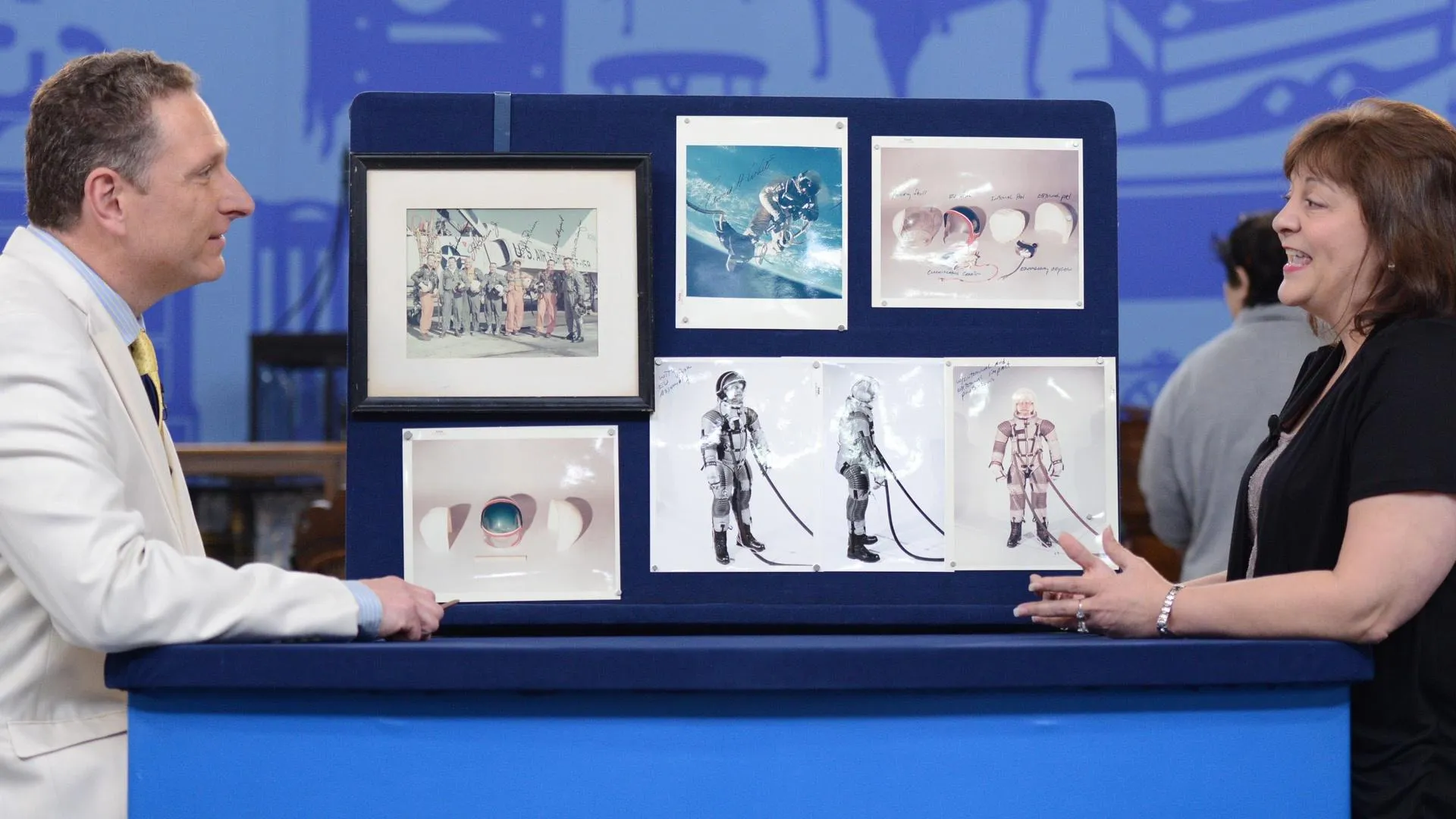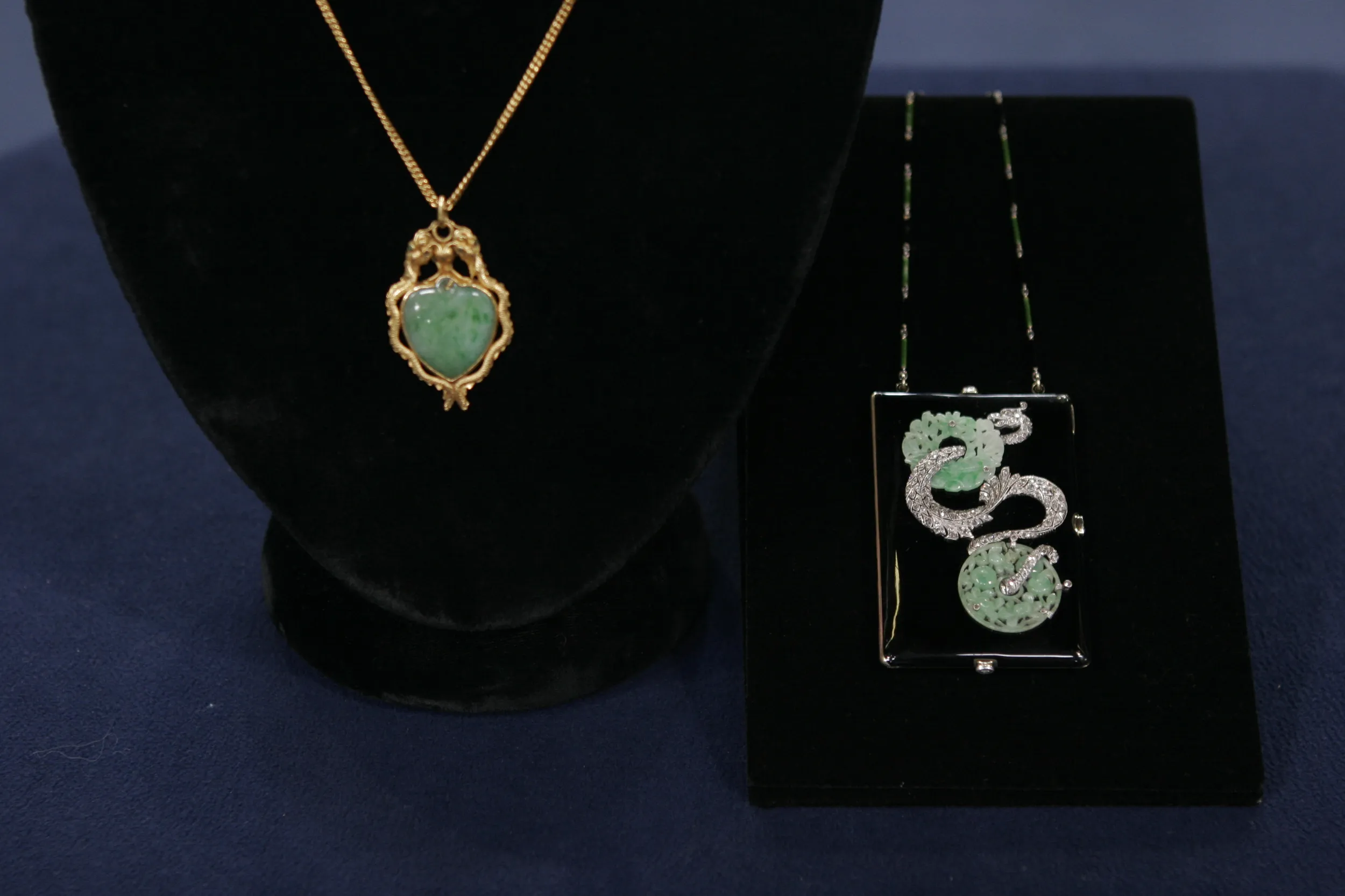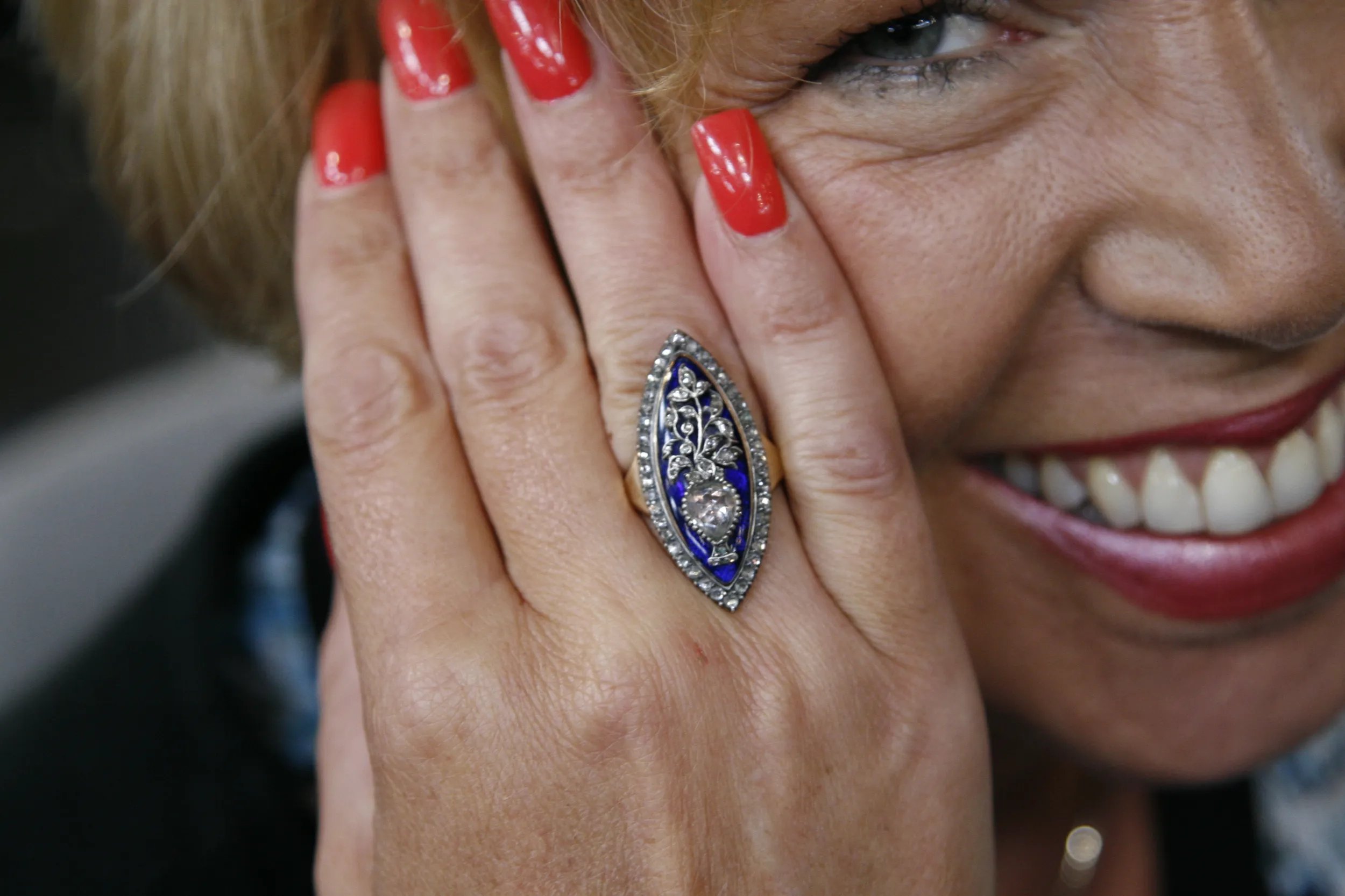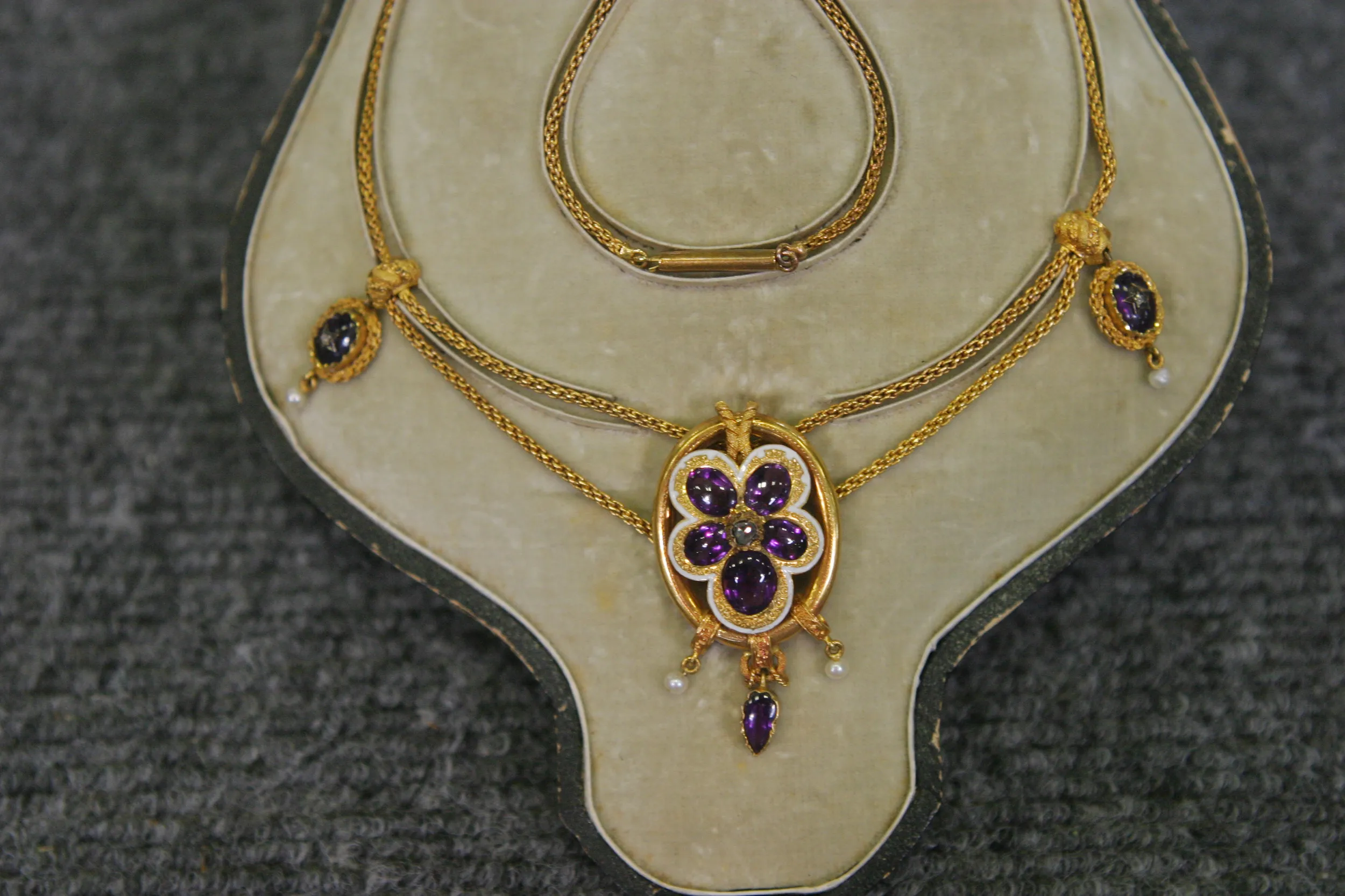GUEST: This is a piece that's been in my family as long as I can remember, and I believe it was originally purchased by my grandfather.
APPRAISER: Do you know about what date your grandfather acquired it?
GUEST: If I had to guess, it would probably be sometime in the early 1900s.
APPRAISER: It looks like a piece that would have been acquired somewhere around 1890 to 1920, which was about when it was made. It's a piece of jadeite that is in peach form. It was probably meant as a birthday present for a very wealthy person. Made in China in the latter part of the Qing Dynasty from beautiful multicolored jadeite, which was a highly revered stone in China, that started to be carved in about the 18th century. This was really a cabinet piece, a presentation piece.
GUEST: Do you know what the wood is, what kind of wood that is?
APPRAISER: It's a rosewood.
GUEST: A rosewood.
APPRAISER: Right, but beautifully carved and very complimentary of the example. Do you have any idea of what you think it might be worth?
GUEST: I have no idea. My husband and I have been sort of having a disagreement over what it's worth, because I'd heard that jade had really plummeted in value as a result of the Chinese being able to machine-carve jade, and so I didn't think it was worth very much.
APPRAISER: Well, that is true for a lot of jadeite, because there was a big boom in carving jadeite in the 1980s, and a lot of pieces came on the market and the prices became so astronomical, and then suddenly dropped because people knew that they were machine carved. But this is a tour de force, this is an exception to the rule here.
GUEST: Oh, okay.
APPRAISER: Now, at auction, currently, this piece would carry a pre-sale estimate of $40,000 to $60,000.
GUEST: You're kidding. Really?
APPRAISER: It's a marvelous example of its type. It's really an exceptional piece, beautiful color...
GUEST: It is beautiful, I love it.
APPRAISER: ...tour de force carving. Thank you very much for bringing it in.
GUEST: Thank you!











